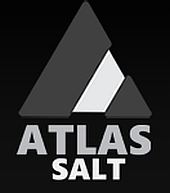 Benchmarkminerals.com – What is driving lithium prices?
Benchmarkminerals.com – What is driving lithium prices?
Happy Friday!
Since the start of the year, Chinese battery-grade lithium carbonate prices have jumped 90% and lithium hydroxide 127%. But since reaching record highs in April, average lithium prices around the globe have held steady. But cobalt and nickel, also important minerals used in batteries, have fallen.
What is driving lithium prices to behave differently to other minerals in 2022? How will these prices change in the longer term?
In a free-to-read article published this week, we look at how robust EV demand and drought in China are impacting short-term lithium prices. In the long-term, Benchmark forecasts supply and demand of lithium to somewhat balance in 2026, stabilising prices. But without significant investment soon, the supply deficit will worsen from 2030 as demand skyrockets.
Increasingly, automakers are turning to Canada to source the raw materials needed to meet North American demand. But can Canada actually meet the demand from these automakers? Find out in this new analysis by Benchmark.
Thanks,
Matthew and Henry
If you have any tips, or would like to let us know what you think of this newsletter, then you can contact us at membership@benchmarkminerals.
https://www.benchmarkminerals.com/membership/what-is-driving-lithium-prices-in-2022-and-beyond/
It’s been almost a year since lithium prices hit an inflection point to all time highs and three months since a controversial Goldman Sachs research note predicting a price crash on increased lithium supply.
Yet Benchmark’s global average lithium prices have held steady since April’s record high levels, with Chinese technical and battery-grade lithium carbonate prices continuing to increase. That’s in stark contrast to other battery metals such as cobalt and nickel, where prices have fallen this year.
Since the beginning of June Chinese battery-grade lithium carbonate prices have increased marginally but year-to-date Chinese battery-grade lithium carbonate prices have risen by 90% while lithium hydroxide is up by 127%.
At the same time competition for future lithium has only intensified as automakers from Ford to Stellantis sign agreements to lock up supply.
Government policy is also kicking demand into a new gear with the passing of the Inflation Reduction Act in the US which will only accelerate the need for automakers to secure lithium sources, especially in North America.
This week Mercedes-Benz and Volkswagen both announced they would look to secure battery raw materials such as lithium in Canada, as part of an agreement with the Canadian government.
“Government sway is now in play and we are seeing it in full force in the USA and just the beginning in Canada,” Simon Moores, chief executive of Benchmark, said. “The lithium ion battery is now geopolitical. And if EVs mean lithium ion batteries, then EVs mean mining.”
So, what are the short and long-term drivers of the current market?

SHORT-TERM: A RECORD YEAR FOR LITHIUM AND BATTERY DEMAND CONTINUES
Demand for lithium ion batteries is on track to grow 36% this year to 610 gigawatt-hours, according to Benchmark’s Lithium ion Battery Database. Lithium supply is set to expand 33%, according to Benchmark’s Lithium Forecast.
In the short-term, continued robust electric vehicle demand globally and record-breaking heat and drought in the southwest of China are the key drivers for the market.
Chinese electric vehicle sales have recovered from April, when Shanghai was placed in strict lock-down to combat the spread of Covid-19. Chinese sales of electric vehicles rose by 25% in June compared to a month earlier.
Globally sales of electric vehicles rose by 34% in June compared to a month earlier, according to Rho Motion.
At the same time supply of lithium is also being impacted by China’s worst heatwave in 60 years. Authorities in Sichuan province ordered factories in most cities to shut down production until August 25 to cope with a power shortage caused by a lack of hydropower generation due to a drought.
The shutdowns could impact around a quarter of China’s lithium production capacity, according to Benchmark. Companies including Yahua and Tianqi Lithium produce lithium in the province.
Battery-grade lithium carbonate prices in China rose by 1.4% in the period 17-24 August, the largest week-on-week increase since Benchmark began reporting weekly EXW China lithium prices on 4 May 2022, due in part to concerns over the power shortages.
Also driving prices are the sustained high prices for spodumene feedstock from Australia. Prices for spodumene (6% Li2O) have risen by 189% year-to-date according to Benchmark.
“We hear from the market that converter inventories are low – this is buoying demand for carbonate and will eventually have a knock on effect in hydroxide pricing,” Daisy Jennings-Gray, an analyst at Benchmark said.
Internationally, lithium hydroxide is still trading at very high levels, around $80,000 a tonne for small spot market volumes in Europe and North America.
Prices used in contracts between lithium miners and buyers are still catching up to Chinese spot market prices as they are renegotiated, and it will likely take another six to 12 months for this process to be fully realised in all contracted prices, according to Benchmark.
Chilean lithium miner SQM said its average sales price for lithium was $54,000 a tonne during the second quarter.
“So even if the spot market were to fall, contract pricing has still got some chasing to do well into 2023,” Jennings-Gray said.

LONG TERM: LITHIUM SUPPLY SHORT FOR SOME TIME
There is very little additional lithium production capacity coming online before late 2023 and early 2024, according to Benchmark, and many projects are still being delayed.
That’s in contrast to the view of Goldman Sachs, which predicted that the market would enter a “prolonged phase of surplus” starting this year, due to supply from new lithium projects in China.
“A shock to the system will bring prices down but the shock won’t be significant oversupply from China,” Moores, CEO of Benchmark, said.
Longer-term, the lithium market is likely to remain tight this decade but become more balanced by around 2026, pushing prices to more stable levels, according to Benchmark’s Lithium Forecast.
“High prices are incentivising accelerated capital spending which will bring forward the timeline for a number of development stage projects, however the speed of these expansions are struggling to keep pace with growing demand,” Andrew Miller, chief operating officer at Benchmark, said.
“The industry is facing a decade of perpetual change. A broader range of assets across a more diverse group of producing regions will be needed to meet the structural constraints facing the industry, and the increased geopolitical importance being placed on strategic supply chains.”
The supply deficit is expected to worsen from 2030 onwards, as demand grows by another 1 million tonnes LCE in a few years.

HOW ARE BENCHMARK’S PRICES USED IN SUPPLY CONTRACTS?
Benchmark’s lithium prices are used in supply contracts between lithium producers and the downstream and midstream supply chain, including automakers.
As contract agreements have shifted away from fixed price deals due to greater pricing volatility, buyers and sellers have looked to introduce market-led mechanisms into contracts, using Benchmark’s IOSCO certified lithium prices, or a basket of reported prices including Benchmark’s published grades. That allows them to price contracts in a way which accounts for increased price volatility in recent years and improves market transparency.
The frequency of Benchmark’s published prices also allows contracts that are tied to them to be renegotiated more frequently, meaning contract pricing can move in a more similar timeframe to significant upturns or downturns in spot market pricing.






























